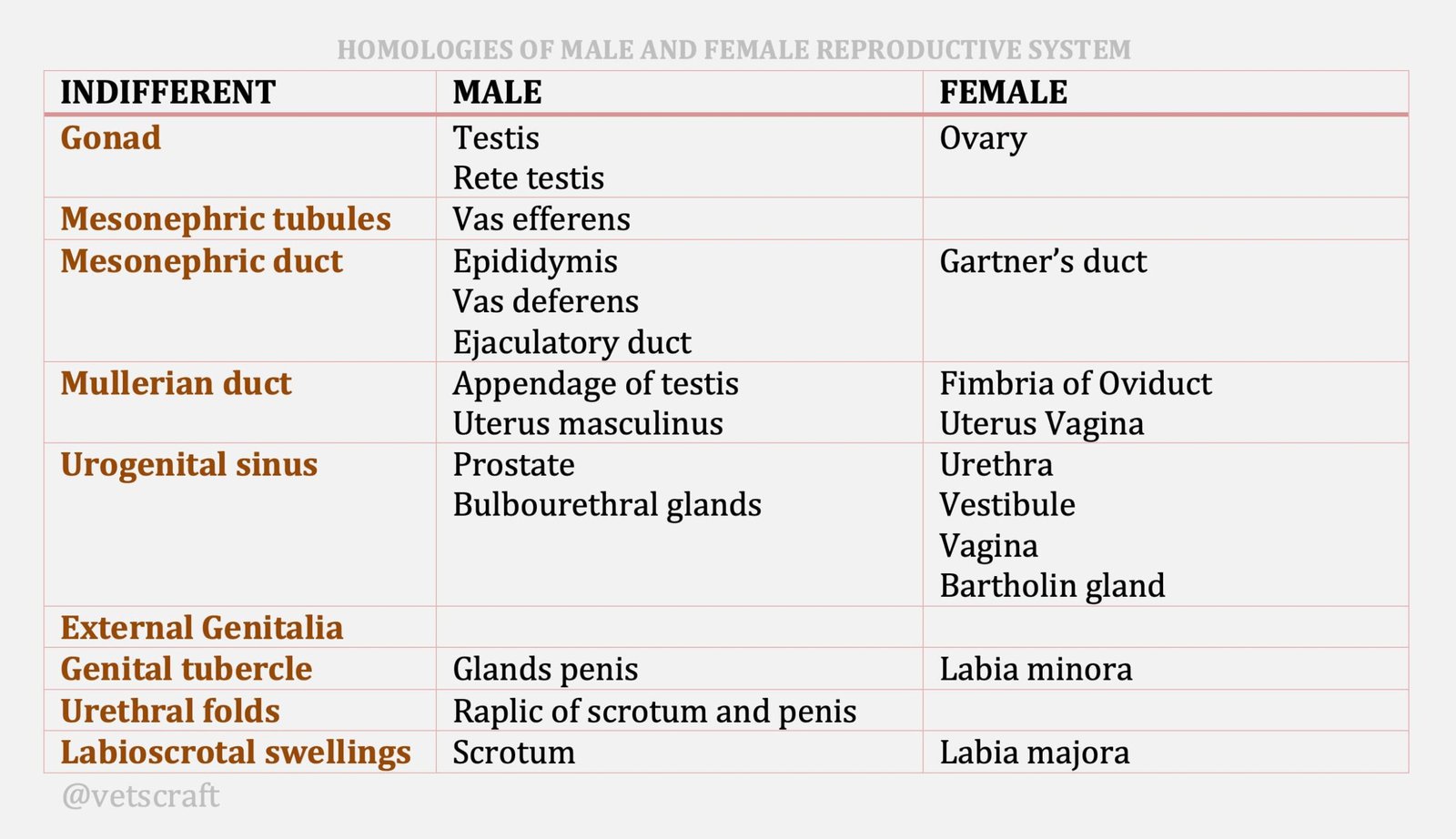TABLE OF CONTENTS
Puberty in Female Animals
Puberty in female animals is defined as the age or time at which the various systems of the body have become functional and reproduction may occur.
In the female puberty is characterized by appearance of estrum and ovulation. In males, it is characterized by secondary sexual changes and ability to copulate and produce sperms.
Onset of puberty normally occurs at a certain age relative to the animal‘s body weight. Heifers must attain approximately two thirds their adult sizes before they reach puberty.
The word puberty originated from latin word “pubscere” that means “to be covered with hair”. The original definition that relates to the presence of hair in certain anatomical regions, obviously does not hold good to other animals.
Onset of puberty in different species:
- Horses: 10-24 months (average 18 months)
- Cattle: 6-18 months
- Sheep: 6-12 months
- Swines: 5-8 months (average 6 months)
- Dogs: 6-12 months (average 7-10 months)
- Cats: 5-18 months

The mechanism of puberty has been extensively studied in sheep. From birth to 7 to 8 months, the hypothalamus is very sensitive to a negative feedback inhibition of estrogen. During this time small amounts of estrogen are sufficient to inhibit gonadotrophin synthesis and release.
Under these conditions, follicles are not able to develop to a certain extent. By 7 to 8 months, two important events occur that establish ovarian cyclicity:
- There is a decrease in sensitivity of hypothalamus to estrogen feed back GnRH pulsatile release from hypothalamus increases and gonadotrophin secretion also increases. High frequency of GnRH pulses stimulates follicle development upto antrum formation and final follicle development.
- Secondly, increased secretion of estrogen results in positive feed back on hypothalamus and anterior pituitary and gonadotrophin discharge. This gonadotrophin surge does not cause ovulation but causes significant production of progesterone form luteinised follicles. Progesterone phase is short lived and is followed in few days by another surge of LH which leads to ovulation.
Mechanism of Puberty
The onset of puberty is not affected by the performance of gonads or the anterior lobe of the pituitary.
The failure of the hypothalamus to produce sufficient quantities of GnRH to cause gonadotropin release is the major factor limiting pubertal onset.
Prior to onset of puberty the following events take place:
- The tonic centre of the hypothalamus produces GnRH in a pulsatile fashion. However, the frequency of GnRH pulses are much lower than in the post pubertal female.
- The low frequency GnRH pulses are not sufficient enough to cause production of
- FSH and LH from the anterior pituitary in high levels
- Thus, follicle development (even though it occurs before puberty) connot result in high levels of estrogen secretion.
- Although estrogen production is low, the hypothalamus is highly sensitive to the negative feed back effects of low estrogen.
- GnRH and gonadotropin levels are low.
Onset of puberty is characterized by two important events:
- Decrease in sensitivity of the hypothalamus to the negative feed back effects of estrogen.
- Higher and higher amounts of GnRH and gonadotropins are produced that stimulate the ovary to produce more and more of estrogen.
- When estrogen levels reach a threshold, they exert a positive feedback on the surge center.
- Ovulation can take place and puberty ensues.
Thus, the triggering mechanism for onset of puberty in the female is the decrease in sensitivity of the hypothalamus to negative feed back.
Factors affecting Puberty
- Interaction with the opposite sex.
- Influence of sex-female attains puberty at an earlier age.
- Breed-small breeds attain puberty at an earlier stage. Eg. Jersey-9 months HF-11 months.
- Climate influence-animals in the tropics attain puberty at an early age.
- Seasonal influence-Breeding season affects onset of puberty. Eg. Ewe lambs born in early spring attain puberty in the fall i.e., within 180 days. But ewe lambs born in late spring and early summer attain puberty only in the fall of the next breeding season i.e., only after 400 days.
- Plane of nutrition-high plane of nutrition leads to early puberty and undernourishment delays onset of puberty.
- Body weight-sheep attain puberty after reaching a body weight of 40 kgs.
- Cow attains puberty after reaching a body weight of 225-250 kgs.
- Exposure to stress delay the onset of puberty.
- Animals reared artificially attain sexual maturity earlier.
- Inbreeding tends to delay puberty; cross breeding tends to hastens puberty earlier.

